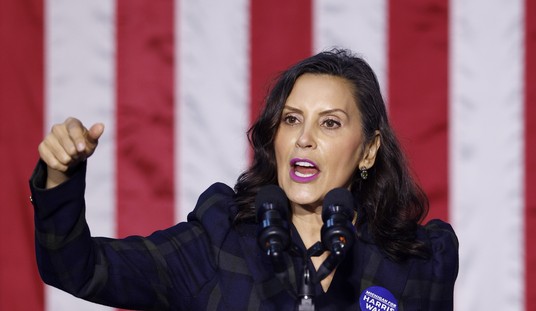Start shopping now for back-to-school items for the kiddos if you haven’t already begun to do it. Thanks to the pandemic and disruptions in supply chains, shortages are expected. And, to add to that hassle, a consumer goods giant is raising prices on such family-friendly basics as mayo and soap, thanks to Biden’s economy.
We hope all children will be able to go back to school and participate in in-person classes, like normal life used to be pre-pandemic. But even if they have to learn virtually from home, everyone needs school supplies. Teachers provide lists of what the students will need. Back-to-school shopping is a yearly ritual. Nothing is simple now, though, and that includes getting the kids back in school. According to the National Retail Federation, the retail industry’s largest trade group, a family will spend an average of $850.
The recommendation is to shop early. Inventory levels are tight and shipping delays will hamper re-stocking shelves as the shopping timeframe plays out. Don’t wait for sales, either.
“What we will likely see is more limited choice and lower stock levels towards the end of the back to school period,” said Neil Saunders, retail analyst and managing director at GlobalRetail Data. “Some consumers will inevitably miss out on the things they want to purchase.”
He said categories in most danger of shortages include backpacks, stationery, sports equipment, laptops and tablets.
With supply being tight, consumers shouldn’t hold out for deeper bargains either. “Discounts will be far less generous both because of less stock and cost inflation,” said Saunders. “Consumers have to be savvy in some areas and buy products quickly.”
It’s not just notebooks and pencils, sneakers and clothing are at the top of the list for students. Brands like Nike are facing supply shortages of their sneakers made in Vietnam, for example. Two of its suppliers have already halted production due to the spread of COVID-19. Panjiva, the supply chain research unit of S&P Global Market Intelligence, reports that Nike may run into shortage problems. Sneakers are “by far the biggest back-to-school category for kids” said one retail analyst.
Parents are getting the message and shopping accordingly. There is concern about the availability of computers and electronic devices due to electronic chip shortages.
“Fifty-nine percent of them have said they would have their school shopping done by the end of July, up from 45% last year,” said Sides, citing results from Deloitte’s 2021 back-to-school survey that polled 1,200 parents from May 27 to June 5 who have at least one child attending school in grades K-12 this fall.
He expects spending on devices will be a big driver of those purchases. It’s the category consumers are most worried about in terms of shortages. “Fifty percent of shoppers are concerned about stockouts, especially for tech items,” he said.
Some retailers and brands are using planes instead of ships to mitigate shortages due to shipping slowdowns. Levi Strauss is using more air shipping of its products and Walmart said it is keeping its inventory supplies of basics on track for now but may experience shortages of items in other categories. Walmart didn’t give details on what those items may be.
Unilever, the consumer goods giant, has begun raising prices on some household basics and warns of continued price-raising due to the rise in inflation. When making school lunches for the kids or making sure they bathe at the end of the day, the price of household items are going up. Products from mayo to soap – think Dove soap and Hellmann’s mayonnaise – will see “accelerating price increases” due to inflation. Some of the product ingredients are rising in cost.
Inflation has continued to pick up pace, rising at the fastest pace in 13 years in the U.S. last month as the recovery from the pandemic gained steam and consumer demand drove up prices of everything from autos to clothes and restaurant meals. Other packaged-food manufacturers, including Procter & Gamble Co. and General Mills Inc., have also warned of rising prices this year.
Mr. Pitkethly said Unilever’s large scale and strong inventories would help to mitigate the price rises but that several costs were out of the company’s control and rising more than expected. The price of ingredients such as palm oil, crude oil and soybean oil all rose sharply in the quarter.
Biden has tried to brush off concerns about inflation but the truth is, he’s clueless. During the CNN town hall Wednesday, he fumbled around and proved he doesn’t seem to understand how to connect the dots. Rising prices, even small increases, in everyday items and in big-ticket purchases all add up. Working-class families have experienced financial difficulty during the pandemic and are struggling to get their budgets adjusted. It all adds up. The Big Guy can brush it off as only a temporary inconvenience but tell that to families trying to pay additional expenses with kids or while grocery shopping. And, common sense tells us he’s just plain wrong with these talking points that all his trillion-dollar spending bills will produce jobs and everything will be just fine. We remember the same talk from Obama and the Obama administration’s economic recovery was the slowest since World War II.
“Because we’re going to be provided good opportunities and jobs for people, who in fact are going to be reinvesting that money back into all the things we’re talking about, driving down prices, not raising prices,” the president told the audience.
Prices are up now. For example, we’re in a position where you’re trying to build a house, trying to find two-by-fours lumber. Well guess what? People stopped working cutting lumber, they stopped doing it because the unemployment was so down. Now all of a sudden there’s this need because people are coming back and guess what? Instead of paying ten cents you’re paying 20,” he said.
Hey, your Independence Day cook-out cost 16 cents less this year. What more do you want? Yeah, they were wrong about that number, too.








Join the conversation as a VIP Member